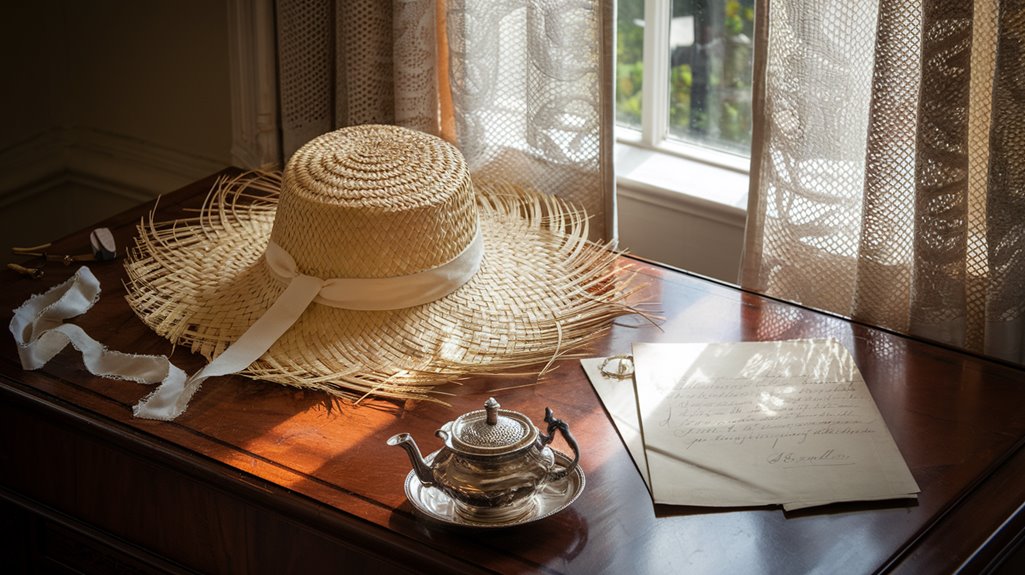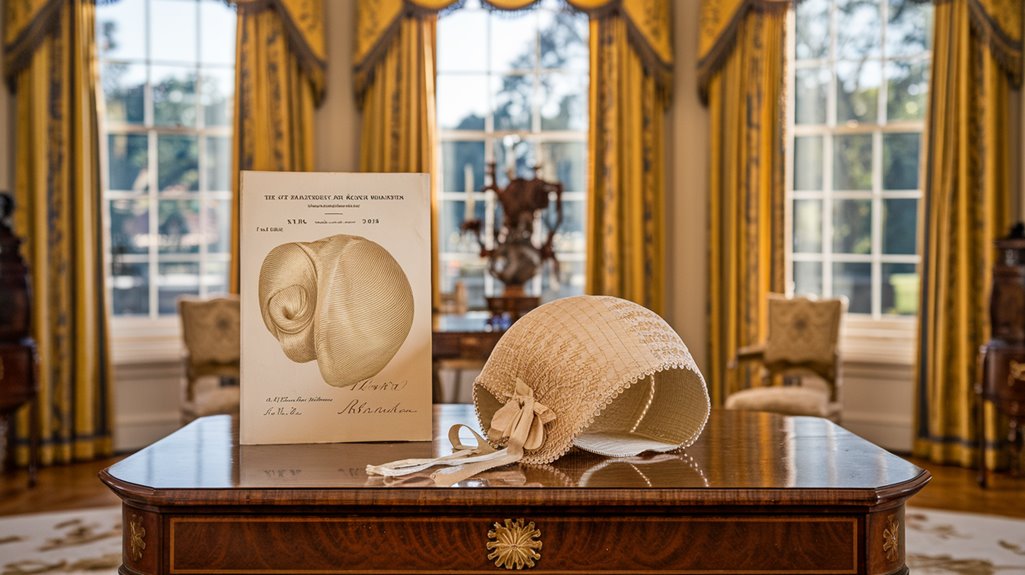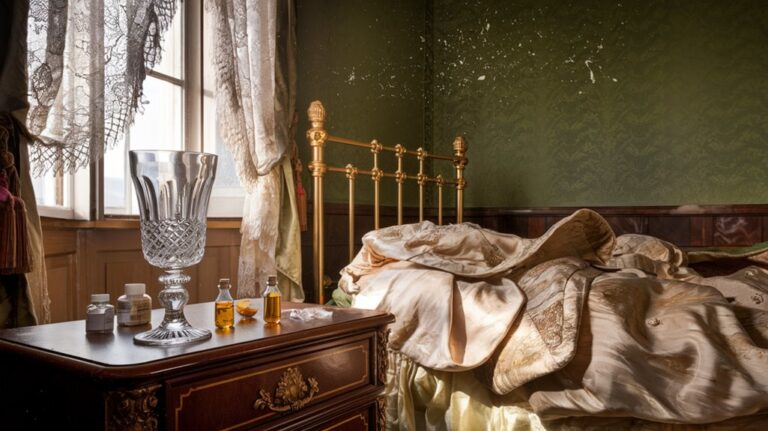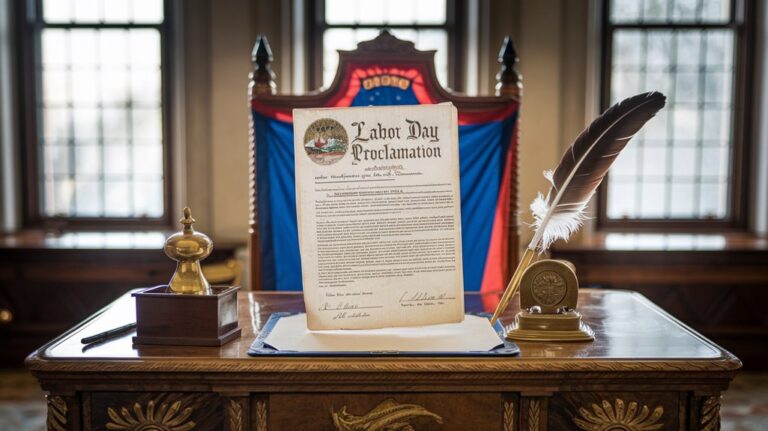When Mary Kies’ Straw-and-Silk Patent Amazed a First Lady
Have you ever wondered how a simple hat-making technique could catch the attention of America's First Lady? In 1809, when trade embargoes threatened the nation's economy, Mary Kies stepped forward with an ingenious solution. Her method of weaving straw with silk didn't just earn her the first U.S. patent granted to a woman—it impressed Dolley Madison enough to warrant a personal letter of praise. What you'll discover about this breakthrough might change how you view early American innovation.
A Revolutionary Woman in American Innovation
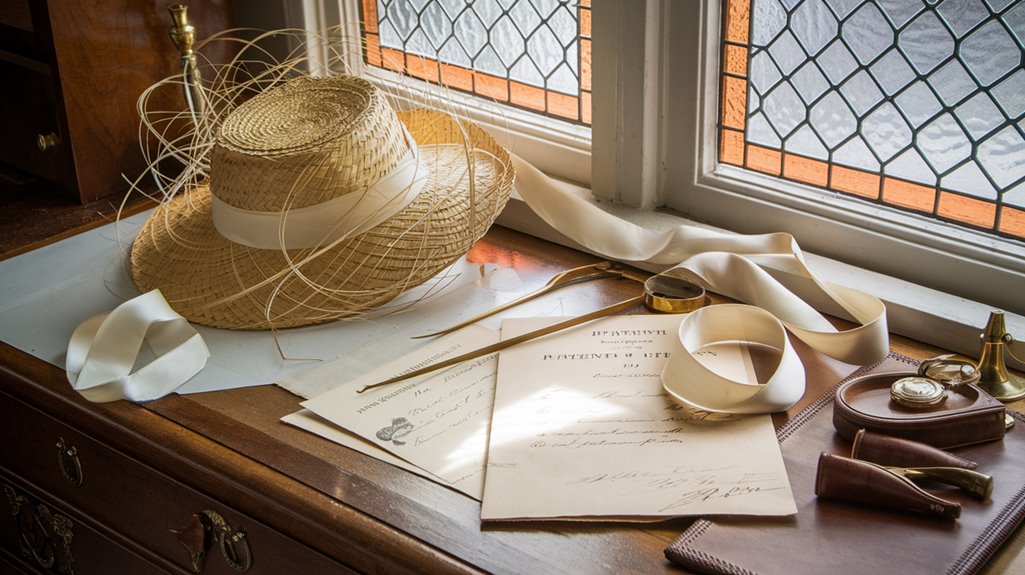
While the Napoleonic Wars disrupted international trade in the early 1800s, they created an unexpected opportunity for American innovation and manufacturing. Against this backdrop, Mary Kies emerged as a pioneer of female entrepreneurship when she secured the first U.S. patent issued to a woman in her own name on May 5, 1809. Her work was particularly timely as the trade embargo created high demand for local hat production.
Her method of weaving straw with silk or thread revolutionized hat manufacturing and earned praise from First Lady Dolley Madison. Unfortunately, her original patent documentation was among the 10,000 patent records lost when the Patent Office caught fire in 1836.
The cultural impact of Kies's achievement extended far beyond her lifetime. You'll find her influence in the growing straw-weaving industry that employed countless women and boosted New England's economy.
Though she died penniless in 1837, her legacy lives on through her 2006 induction into the National Inventors Hall of Fame and the thousands of female inventors she inspired.
The Birth of the Straw-Weaving Breakthrough
As trade restrictions from the Napoleonic Wars squeezed American commerce, a vital shortage of European millinery goods created the perfect conditions for Mary Kies' groundbreaking invention.
You might wonder how economic necessity sparked her straw innovation. While Betsy Metcalf had already developed a straw-braiding method in 1798, Kies took it further by combining straw with silk and thread in a unique way. Similar to modern deep learning models, her innovative approach involved combining different materials to create something entirely new.
Her method, patented on May 5, 1809, made hats more durable by using silk in the seams to secure the cross-hatching. This timely invention proved immensely successful, helping Massachusetts alone produce straw bonnets worth $500,000 by 1810.
Though her original patent was lost in an 1836 fire, Kies' contribution revolutionized American hat-making during a vital period of economic embargo. Even First Lady Dolley Madison wrote to praise her ingenious invention.
First Lady Madison's Recognition and Support
When Mary Kies received her groundbreaking patent in 1809, First Lady Dolley Madison took immediate notice of its significance. She sent Kies a congratulatory letter, recognizing how the straw-and-silk weaving method would help New England's economy during the challenging Embargo of 1807. Like modern educational resources today, Kies' innovation provided valuable tools for learning and advancement in her field.
You'll find that the First Lady's endorsement carried substantial weight, as she was known for her keen interest in fashion and hats. Her support highlighted women's contributions to innovation during a time when female inventors rarely received recognition.
The timing couldn't have been better – with foreign trade halted, Kies' domestic solution for hat-making materials proved invaluable. Kies made history as the first woman to patent her invention under the 1790 Patent Act. The invention soon became widely adopted throughout New England's hat industry, transforming into both an economic success and a fashion sensation that symbolized American ingenuity.
Breaking Barriers in Patent History
Because women faced significant legal barriers in the early 1800s, Mary Kies' achievement as the first female patent holder marked a revolutionary moment in American history.
Like Melitta Bentz, who created an innovative coffee filter in 1908, Kies proved that women could excel in product development.
At a time when women couldn't legally own property independent of their husbands, her patent breakthrough opened doors for future women inventors.
You might be surprised to learn that only 20 patents were issued to women before 1840, highlighting how rare Kies' accomplishment truly was.
Between 1617 and 1852, a mere 62 patents were granted to women in England, showing this gender disparity was not unique to America.
Women inventors often encountered patent challenges, from ownership disputes to outright theft of their ideas.
Consider Margaret Knight, who'd to fight in court when a man tried to steal her invention.
Despite these obstacles, Kies' legacy inspired generations of female innovators, and today, women represent more than 12 percent of patent applicants, proving her lasting impact on American innovation.
The New England Hat Industry's Game-Changer
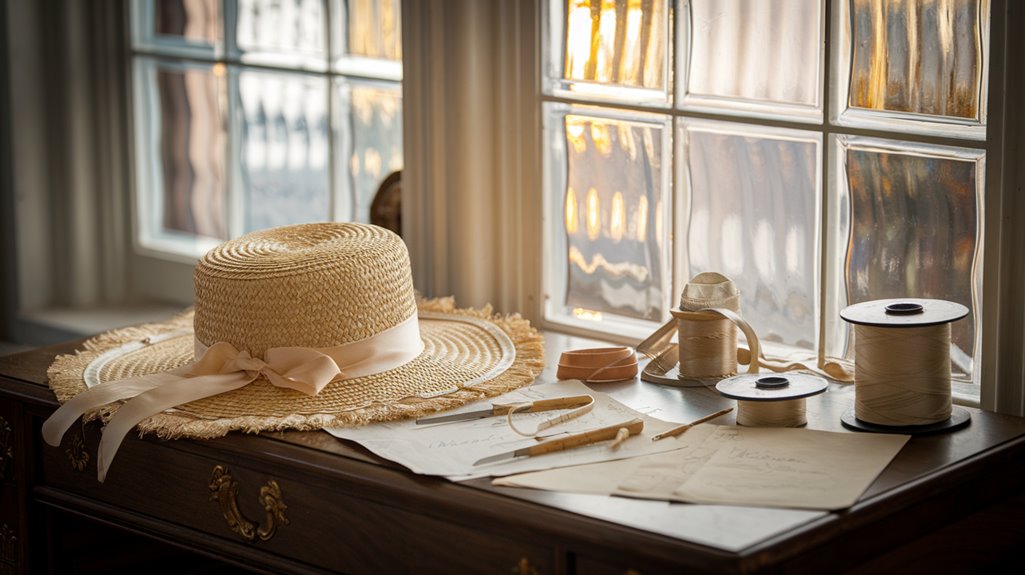
While early America struggled under trade restrictions with Europe, the New England hat industry found an unlikely hero in Mary Kies. Her 1809 patent for weaving straw with silk revolutionized hat production just when the nation needed it most, spurring remarkable industrial growth across the region. First Lady Dolley Madison personally sent Kies a congratulatory letter praising her achievement.
You can imagine the impact when you consider these game-changing developments:
- Massachusetts alone produced $500,000 worth of straw bonnets by 1810
- Danbury, Connecticut transformed into "Hat City," making 5 million hats annually by the 1880s
- Fifty-six hat shops emerged in Danbury by 1809, each employing multiple craftsmen
The innovation couldn't prevent future labor challenges though, as manufacturers later faced intense union pressures. Factory conditions were particularly dangerous due to mercury poisoning symptoms, which caused workers to experience tremors, irritability, and other severe health issues.

